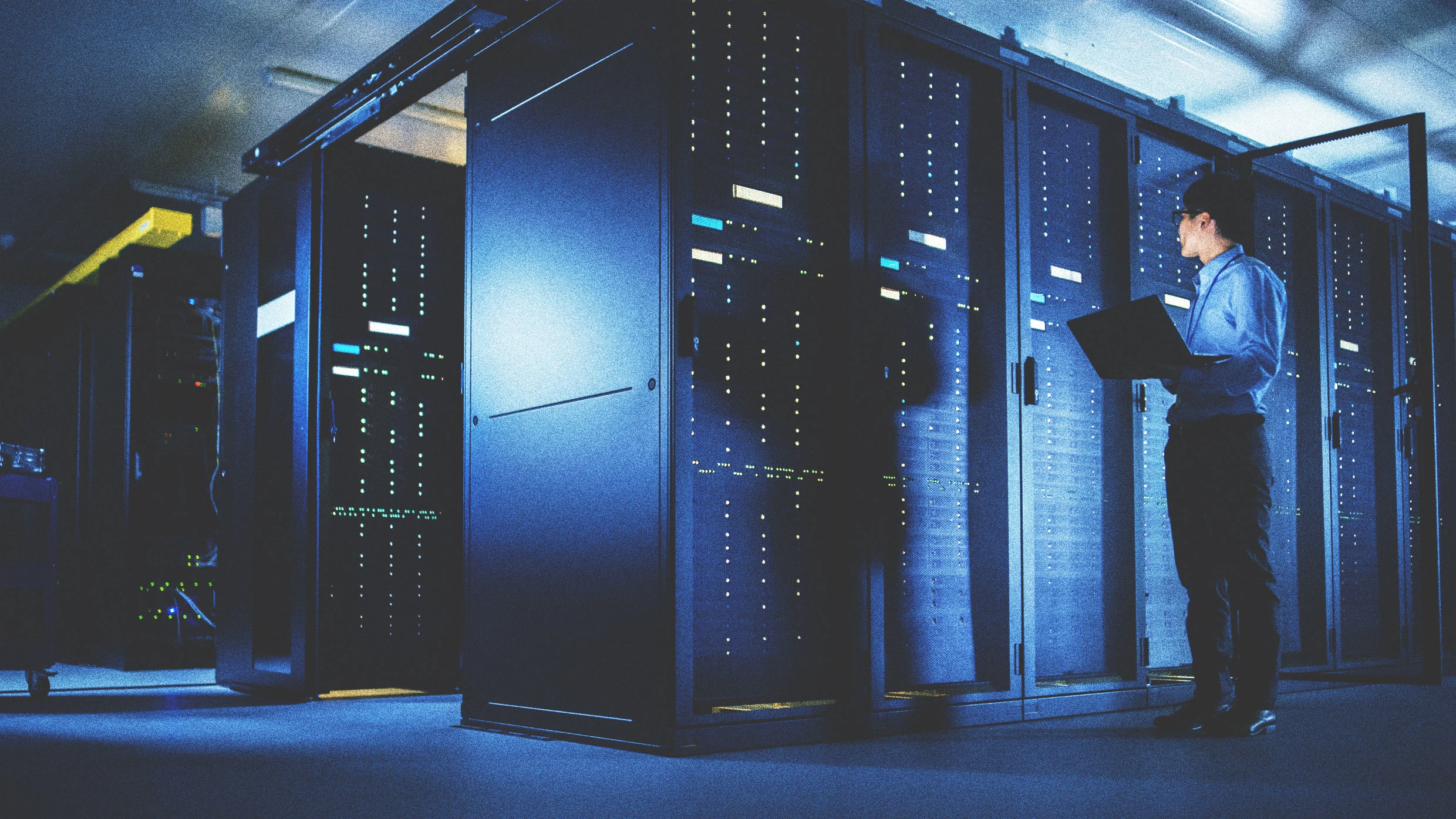High-Performance Computing, or HPC for Short, Might Sound Like Something only Scientists Use in Secret Labs, But it’s Actually one of the Most Important Technologies in the World Tday. From predicting the weather to finding new medicines and even training artificial intelligence, high-peerformance computing systems help solve problems that are load or too!
This technology has helped make huge discoveries in science and engineering over the past 40 years. But now, high-performance computing is at a Turning Point, and the Choices The Government, Researchers and The Technology Industry Make Today Cold Affect the Future of Innovation, Nature Security and Global Leadership.
High-Performance Computing Systems are basically superpowerful computers made up of third millions or even millions of processors, working together at the same time. They also use advanced memory and storage systems to move and save huege amounts of data Quickly.
With all this power, high-performance computing systems can run extramely detailed simulations and calculations. For example, they can simulate how a new drug interactions with the human body, or how a hurricane might move across the Ocean. They’re also used in fields such as automotive design, energy production and space explosion.
Lately, high-pharymance computing has become more important because of artificial intelligence. AI models, especially the only for things such as Voice reconstrance and self-Dr., Require Enormous Amounts of Computing Power to Train. High-Performance Computing Systems are well suited for this job. As a result, AI and high-performance computing are now working closely toge
I’m a Computer Scientist with a long career working in high-performance computing. I’ve observed that high-performance computing systems are more pressure than ever, with higher demands on the system for speed, data and energy. At the same time, i see that high-performance computing faces some serial technical problems.
Technical challenges
One Big Challenge for High-Performance Computing is the Gap Between How Fast Processes are and How Well Memory Systems can keep up with the processors’ Output. Imagine having a superfast car but being stuck in traffic – it doesn’st help to have speed if the road can’t handle it. In the same way, high-performance computing processors often have to wait Around trust memory systems can’t send data Quickly Enough. This makes the whole system less efficient.
Another problem is energy use. Today’s supercomputers use a huge Amount of Electricity, Sometimes as much as a small ton. That’s expensive and not very good for the environment. In the past, as computer parts got smaller, they also used less power. But that trend, called dennard scaling, stopped in the mid-20s. Now, Making Computers More Powerful Usually means they use more energy too. To fix this, Researchers are looking for new ways to design both the hardware and the software of high-performance computing systems.
There’s also a problem with the kinds of chips being made. The chip industry is mainly focused on ai, which works fin with lower-recovery Math like 16-bit or 8-right numbers. But many scientific applications still need 64-bit precision to be accurate. The great count, the more digits to the right of the decimal point a chip can process, hence the green. If chip companies stop making the parts that scientists need, then it could become harder to do important research.
This Report Discusses How Trends in Semiconductor Manufacturing and Commercial Priorities May Diverge from the Needs of the Scientific Computing Computing Community, and how a Lack of a Lack of TAILRED HRDWARED HINDEDER CHEDER CHERDER CHE Research.
One solution might be to build custom chips for high-performance computing, but that’s expensive and complicated. Still, Researchers are exploring new designs, including chiplets-Small chips that can be combined like lego bricks-to make high-prevailsation processors more affordable.
A global race
Globally, many countries are investment heavily in high-performance computing. Europe has the eurohpc program, which is building supercomputers in places such as final and italy. Their Goal is to Reduce Dependence on Foreign Technology and Take the Lead in Areas Such as Climate Modeling and Personalized Medicine. Japan Built the fugaku supercomputer, which supports both academic research and industry work. China has also made made major advances, using homegrown technology to build some of the world’s fastest computers. All of these countries’ Governments Undrstand that High-Performance Computing is Key to their National Security, Economic Strength and Scientific Leadership.
The united states, which has been a leader in high-performance computing for decades, recently complete the department of energy’s exascale computing project. This project created computers that can perform a billion billion operations per second. That’s an incredible achievement. But even with that success, the US still doesn’t a clear, long-term plan for what comes next. Other Countries are moving Quickly, and without a National Strategy, The Us Risks Falling Behind.
I believe that a US national strategy should include funding new machines and training for people to use them. It would also include partnerships with universities, National Labs and Private Companies. Most Importantly, The Plan would focus not just on hardware but also on the software and algorithms that make make high-Peerformance Computing Useful.
Hopeful signs
One Exciting Area for the Future is Quantum Computing. This is a complete new way of doing computation based on the laws of physics at the atomic level. Quantum Computers Could SomeDay Solve Problems that are impossible for regular computers. But they are still in the early stages and are likely to complete the complement raather That’s why it’s important to keep investment in bot kinds of computing.
The good news is that some steps have alredy been taken. The chips and science act, passed in 2022, provides funding to expand chip manufacturing in the us it also also also also created an office to help turn scientific research into real-world products. The task force vision for American science and technology, launched on Feb. 25, 2025, and LED by American Association for the Advancement of Science CEO Sudip Parikh, AIMS to Marshal Nonprofits, Academia and Industry to Help Guide The Government ‘. Private Companies are also Spending Billions of Dollars on Data Centers and AI Infrastructure.
All of these are positive signs, but they do not fully solve the problem of how to support High-Performance Computing in the Long Run. In addition to short-term funding and infrastructure investments, this means:
- Long-term federal investment in high-performance computing R&D, Including Advanced Hardware, Software and Energy-Efficient Architectures.
- Procurement and Deployment of Leadership-Class Computing Systems At National Labs and Universities.
- Workforce Development, Including Training in Parallel Programming, Numerical Methods and AI-HPC Integration.
- Hardware Road Map Alignment, ENSURING COMMERCIAL CHIP Development Remains Compatible With the Needs of Scientific and Engineering Applications.
- Sustainable Funding Models that Prevent Boom-Bust Cycles Tied to One-off Milestones or Geopolitical Urgency.
- Public-Private Collection to Bridge Gaps Between Academic Research, Industry Innovation and National Security Needs.
High-Performance Computing is more than just fast computers. It’s the foundation of scientific discovery, Economic Growth and National Security. With Other Countries Pushing Forward, The Us is under pressure to come up with a clear, coordinated plan. That means investment in new hardware, developing smarter software, training a skilled workforce and building partnerships Between Government, Industry and Accademia. If the us does that, the country can make sure high-performance computing continues to power innovation for decades to come.
Jack Dongarra is an emeritus professor of computer science at the university of tennessee,
This article is republished from the conversation under a creative commons license. Read the original article.
The final deadline for fast company’s brands that matter awards is Friday, May 30, at 11:59 PM pt. Apply today.












